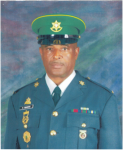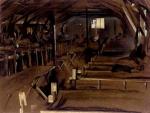-
Posts
1,020 -
Joined
-
Last visited
-
Days Won
2
Content Type
Profiles
Forums
Blogs
Gallery
Events
Store
Everything posted by Taz
-
Hi Guys, the list on this site might help to make a start for your rank and unit abbreviations list. http://indiannumismatics.com/abbreviations.php Regards Eddie.
-
Hi Emmanuel, No additional info or photo's i'm afraid, it was a newspaper article if I remember right, while random searching. Regards Eddie
-
A few ribbons and badges in wear. WOI Martin’s awards and decorations include the Trinidad and Tobago Defence Force General Service Medal, Trinidad and Tobago Defence Force Distinguished Shooters Medal, Humanitarian Service Medal, International Students Badge-U.S. Army, Volunteer Service Medal, and the Trinidad and Tobago Defence Force Efficiency Medal.
-

Medal Mounting - Tutorial
Taz replied to Brian Wolfe's topic in Great Britain: Orders, Gallantry, Campaign Medals
Thanks for the answer Brian. Excellent tutorial whatever rank he held Regards Eddie -

Medal Mounting - Tutorial
Taz replied to Brian Wolfe's topic in Great Britain: Orders, Gallantry, Campaign Medals
Very nice work!! Just one question, is there a reason that his shield on the finished framed mounting has PTE? On the photo he seems to be wearing Lance Bombadier stripes. Regards Eddie -
The Vampire dugout (known locally in Belgium as the Vampyr dugout), was a First World War underground brigade headquarters, located near the Belgian village of Zonnebeke. It was created 14 metres (46 ft) below Flanders by the 171 Tunnelling Company of the Corps of Royal Engineers,after the Third Battle of Ypres/Battle of Passchendaele. Rediscovered in 2007, it was the subject of a 2008 British television programme in the Channel 4 Time Team series, also shown on the Science Channel in the United States. The dugout, inaccessible to the public as it is located on private property, is inspected every year by the local battlefield historical society. http://en.wikipedia.org/wiki/Vampire_dugout
-
That's a big Flamethrower =O Livens Large Gallery Flame Projectors were large experimental flamethrowers used by the British Army in World War I, named after their inventor, Royal Engineers officer William Howard Livens. Four flamethrowers were deployed in 1916 the Battle of the Somme and one in 1917 in an offensive near Diksmuide, Belgium. Two of the weapons at Somme were destroyed by German shelling before they could be used, but the other two were used at the start of the offensive. Their use may have helped the British in those sectors of the front as British losses there were comparatively low. The weapons were 56 feet (17 m) long, weighed 2.5 long tons (2.5 t), took a carrying party of 300 men to bring them to the front line and assemble them, and were operated by a crew of eight. The Livens Large Gallery Flame Projector was designed to be used from a shallow tunnel dug under no man's land. The weapon consisted of a long chamber containing the fuel, a 14-inch (360 mm) diameter pipe and a nozzle on the surface. A piston-driven compressed gas was pushed into the long fuel chamber, forcing fuel out of the surface nozzle, to be ignited and directed at the target.The maximum range of the weapon was 30 to 40 m (100 to 130 ft). Historians Peter Barton and Jeremy Banning with archaeologists Tony Pollard and Iain Banks from the Centre for Battlefield Archaeology at Glasgow University were successful in May 2010 in finding at Mametz the remains of one of the Livens Large Gallery Flame Projectors. This project was undertaken for a Channel 4 Time Team documentary first broadcast on 14 April 2011. A full size, working model of the weapon was constructed to prove its efficacy
-
Very nice!! Have you been giving lessons on how to mount ribbons? lol I wonder why the one guy has the Medalla Conmemorativa "30 Anniversario de FAR" ribbon the "50 Anniversario de FAR" also, but not the 40. Regards Eddie
-

Interesting Surplus store find
Taz replied to censlenov's topic in State, Civil Awards & Decorations
It's the LANDESBAUERNSCHAFT KURMARK - Ehrenzeichen für treue Arbeit in Silber Regards Eddie -
Bunk house Troops’ sleeping quarters. Amiens hut Unpopular temporary structure of canvas on a frame used at British base camps, WWI. Armstrong hut (BrE) Small, collapsible British army hut made from canvas, WW I. Bivvy Sleeping quarters, WWI. Adrian hut French barrack hut, widening towards ground level to provide extra floor space, WWI. Elephant Semi-circular-sectioned hut made of curved corrugated iron, WWI. Quonset hut (AmE) Military hut in WWII developed in the US by George A. Fuller Construction company at the airbase at Quonset Point. They were used all over the world. Nissen hut (BrE) Semi-cylindrical form of hut, named after Lt.-Col. P. N. Nissen its designer, similar to the quonset hut, developed in Britain. Basha (BrE) Simple hut of bamboo poles and grass thatch, used as a barrack room, Southeast Asia. Tin town (BrE) Any collection of barrack huts made of corrugated iron. Rather vague description of it
-
Thats the one Boris, Diebitsch-Kreuz 1st klasse. Paul Meybauer, Berlin was apparantly the only maker of these awards. Oberst Freiherr von Diebitsch insituted five awards: Diebitsch-Kreuz 1er klasse Diebitsch-Kreuz 2er klasse Stern von Malplaquet Damenschleife zum Stern Medaille für gute Pferdepflege. The Diebitsch-Kreuz was awarded for brave conduct in the Freikorps Regards Eddie
-

BARBADOS: ORDER OF THE DOLPHIN?
Taz replied to Dragomir's topic in Rest of the World: Militaria & History
All known i think. GOLD CROWN OF MERIT For highly meritorious service or achievement in science, the arts, literature, sports, civic duties or any other endeavour worthy of national recognition. SILVER CROWN OF MERIT For meritorious service or achievement in science, the arts, literature, sports, civic duties or any other endeavour worthy of national recognition. BARBADOS SERVICE STAR For meritorious work in the civil, fire, military, police, prison or other protective services or any other similar field of endeavour. BARBADOS SERVICE MEDAL For meritorious work in the civil, fire, military, police, prison or other protective services or any other similar field of endeavour. BARBADOS BRAVERY MEDAL For acts of bravery in hazardous circumstances. -

City of London cross..
Taz replied to Veteran's topic in Great Britain: Orders, Gallantry, Campaign Medals
Not a great deal of help but a bit of info to start, names seem to be different Sheriffs of London 1869 Sir Joseph Causton, Sir James Vallentin Besley, Robert (1794-1876) civic activist and Lord Mayor was born in Exeter on 14 October 1794. Here he began his business life in his father’s shop where, as an apprentice, he learned the skills of printing. It was here too that his brother managed the Devonshire Chronicle as a newspaper of West Country Liberalism. These two elements - printing and a Liberal politics - would inform the rest of his business and civic activities. In 1820 he joined the firm of Messrs. Thoregood, typefounders, based in Fann Street, where he later became head. Other interests included Chairman of the Scarborough and Whitby Railway Company and Chairman of Griffin’s Wharf. In 1854 he began his representation of the Aldersgate ward on the Common Council and from 1861 to his death he was Alderman. By 1864-5 he was Sheriff and in 1869-70, Lord Mayor. In between he was Governor of the Queen’s Anne Bounty and of Stone lunatic asylum. He died at Victoria Road, Wimbledon Park on 18 December 1876, and was buried at Battersea cemetery. Causton, Sir Joseph (1815-1871) businessman and civic activist, was born of uncertain date at St. Alban’s in 1815. He came to London in 1829 and with the assistance of his uncle, Matthew Foster, commenced business as a wholesale stationer at 37 Eastcheap in the City. He became a Common Councillor for Billingsgate in 1848, Master of the Skinners’ in 1861, and Alderman for Bridge Within from 1867 until his death (he had unsuccessfully contested Cheap in 1858) and Sheriff for London and Middlesex in 1868. The pinnacle of his career occurred when the Queen opened Blackfriars Bridge and Holborn Viaduct in 1869 and he was knighted at Windsor Castle to mark the event. He died at Champion Hill, Camberwell on 27 May 1871 and was buried at Norwood Cemetery a few days later, leaving at least one son who was to become Lord Southwark. -

Unidentified Early German Panzer..... Or not?
Taz replied to Odulf's topic in Armour, Vehicles, Ships & Aircraft
Well the tanks depicted are British Vickers Medium Mark II tanks, as to what they are doing and why marked that way i suppose unless simlar photos turn up we might never know, take your pick. Marked as enemy tanks for excercise purposes. A Diorama (explaining tactics?) Target tanks. Regards Eddie -

BARBADOS: ORDER OF THE DOLPHIN?
Taz replied to Dragomir's topic in Rest of the World: Militaria & History
Yes those and the ones linked below, first two and last one maybe? http://www.fattorini.co.uk/pop.aspx?pi=MilliMedal4fullsize.jpg&no=52 Hope you get a reply soon from them =) Regards Eddie -

BARBADOS: ORDER OF THE DOLPHIN?
Taz replied to Dragomir's topic in Rest of the World: Militaria & History
Well on the firm web site under military medals there is a thumbnail that shows a few medals with a trident as part of its suspension, could these be from Barbados? Regards Eddie -

Bundesrepublik BRD Medal bar............
Taz replied to SteveL's topic in Germany: Post 1945: Bundesrepublik & DDR
Non military can take part in the marches yes, serving military teams need to fill different critaria if i remember right. Regards Eddie -
Hi Mark, can't find a match at the moment either sorry, i was thinking that it might be French they like the round badges in their designs, keys and swords sometimes denotes quartermaster. Regards Eddie
-
As in soviet style the precedence would be, from left to right as you look, Medalla Conmemorativa "XX Anniversario de FAR" , Medalla Conmemorativa "30 Anniversario de FAR" and then Distinción "Por el Servicio en las Fuerzas Armadas Revolucionarias" (10 years) First issued commemerative medals are always first on ribbon bars if mounted correctly. Regards Eddie
-
Maybe yes, but it should have black edges to the ribbon if its a Cuito Cuanavale and would be first on the bar being higher in precedance. I would tip a reversed 30 year ani ribbon, not unusual to see mixed up cuban ribbons. Regards Eddie
-
Leo, one point that i never mentioned was until when were these awarded. In your original post you asked if it was up until 1961 i think. Under Decreto ley 30 of 1978 the castro version was implemented, the Medalla "Cruz Roja Cubana" so i imagine up till then. Have a nice weekend too, Regards Eddie
-
Leo, should have said cross in bronze in case there is any confusion, no enamel work on this class at all. Regards Eddie
-
Hi again Leo, this is how i understand it to be at the moment: Grand Cross - golden Star with a Sash Commander - Neck-Decoration Officer - Decoration with a Rosette on the ribbon Knight - Decoration without a Rosette on the ribbon 5th class - Decoration without a Rosette on the ribbon. Cross in bronze All decorations have stars between the red cross arms, the Grand cross and commander grades had silver stars on the ones i have seen, in fact all were silverish in colour apart from the all bronze lowest grade come to think of it. Regards Eddie
-
Hi Leo, As far as i know, yes there were five classes of the Order: Grand Cross (the one you mention) Commander Officer Knight 5th Class There were various different makers of these awards which would lead to a few minor variations i would imagine, but to go as far as having reversed gilting I'm not too sure. Saying this my field of expertise is more the Castro era awards and not these pre-castro ones, however if i find any relevant information i will post it here. Regards Eddie



